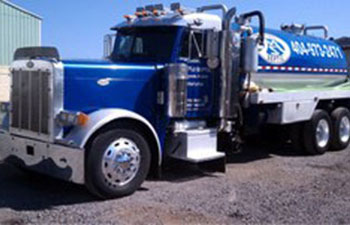
Are you a septic tank owner that has no idea how your system actually operates? Understanding what is going on underground with your plumbing system can help you care for it better and extend your septic system lifespan. Your septic tank is the central component; it is a large watertight tank that measures about nine feet long, 4 feet wide and 5 feet tall (on average). The number of gallons your tank holds depends on the size of your house. A 1,500-gallon tank is most common.
To understand your septic system function, let’s start with the your household waste. When you flush raw wastewater down your toilet, sink or laundry, it goes into the septic tank, where it separates into solids and liquids. Light solids float on top and form a scum layer; these are your soapsuds and fat. The liquid waste flow into the drain field and the heavy solids settle to the bottom of the tank. The heavy solids are decomposed by bacteria over time. However, there will be some solids that do not decompose and will form a layer of sludge, which needs to be pumped out by a professional on a routine basis.
If your septic tank has two compartments, the process of settling solids is more effective and streamlined. The tees or baffles of the inlet pipe within the tank will slow the incoming wastes and allow the solids to settle better. In addition, a tee or baffle on the outlet pipe prevents the scum layer from escaping.
Your septic system will continue to function beyond the septic tank. When the wastewater leaves the tank, it is sent into the drain field through a network of pipes. Here the soil and gravel trenches further treat the effluent as it gets distributed evenly throughout the drain field. The size of your drain field is directly based on the amount of daily wastewater of your house as well as the soil conditions of your property.
In order for your septic system to function properly, you must do your part. It is critical that you schedule a routine septic inspection and pumping. This ensures that your septic parts are operating correctly and that your system does not backup and cause costly problems. For more information on how your septic tank works and when it needs to be pumped, call Metro Septic today!



